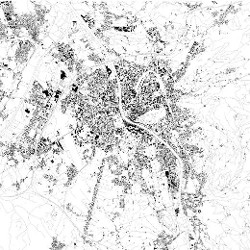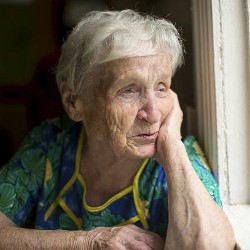Demographic perspectives of the impact of COVID-19 pandemic
The COVID-19 pandemic has caught most of the world unprepared. Since the official report from China about the outbreak of the new coronavirus – 2019-nCoV – on 7 January 2020, there remain many uncertainties about the new virus, ranging from the clinical-epidemiological aspects, policy measures to social and economic consequences. One thing that appears to be certain is the differential vulnerability to COVID-19 pandemic. It is evident that older populations and people with pre-existing medical conditions have higher risk of morbidity and mortality from COVID-19. Recent evidence shows that men, members of minority ethnic groups and people living in economically-deprived areas are more likely to become seriously ill and die from COVID-19 infections. Not only do people with different demographic and socioeconomic characteristics are differentially susceptible to COVID-19 disease, the ability to cope, response, recover and adapt to the pandemic and its social and economic consequences varies across population subgroups as well as institutional and geographical contexts.
The research conducted at POP covers different geographical areas in the world and can add to the understanding of the demographic and social dimensions as the pandemic progresses.
List of COVID-19 related research at POP
Assessing the potential impact of COVID-19 on life expectancy
Guillaume Marois, Raya Muttarak, Simone Ghislandi, and Sergei Scherbov
The COVID-19 pandemic has caused a significant number of deaths worldwide. If the prevalence of the virus infection continues to rise, it can potentially have an impact on life expectancy. This study provides first estimates of the potential impact of the COVID-19 pandemic on period life expectancy. We built a discrete-time microsimulation model that simulate life histories of 100,000 individuals by five-year age groups week by week for a period of one year. In order to account for a large range of possible outcomes of the pandemic, we built a range of scenarios combining bias-adjusted age-specific case fatality rates and their 95% credible interval (CrI) estimated for the province of Hubei (China) and six assumptions of prevalence rates of COVID-19 infection. The estimates are carried out for four broad regions, namely: 1) North America and Europe; 2) Latin America and the Caribbean; 3) South Eastern Asia; and 4) Sub-Saharan Africa. Results show that in the regions with relatively high life expectancy, for a prevalence of infection threshold above 1 or 2%, the COVID-19 pandemic will break the secular trend of life expectancy resulting in a decline in period life expectancy. More information
Community COVID-19 Vulnerability Index in India
Samir KC, Rakesh Mishra, Raman Mishra, and Ankita Shukla
Given the population size of the elderly, prevalence of co-morbidities, the proportion of the population lacking basic water, sanitation and hygiene facilities, education level and the media exposure among household with at least on elderly, some areas of India are more vulnerable to the adverse effects of Covid-19 than the others. In this paper, we estimated several of these indicators for 640 districts of India using publicly available data and computed a community Covid-19 vulnerability index (CVI). We show that some areas of India are more at risk of severe infection and deaths than others and recommend the central and state governments to reach the vulnerable population through the vast network of local-level governments by empowering them to protect the community in their respective constituency. More Information

© Vampy1 / Dreamstime.com
COVID-19 vulnerability index for Austrian municipalities
Leora Courtney-Wolfman, Roman Hoffmann, Anna Renner, Erich Striessnig, and Raya Muttarak
A variety of factors can influence individual vulnerability amid the COVID-19 pandemic. Vulnerable groups are not only the elderly or those with a weak health condition and comorbidities, but also socioeconomically disadvantaged groups who might struggle to cope with the consequences of the crisis. Measuring and mapping vulnerability is important to inform health authorities and policy makers and to enable them to develop adequate responses. More information
Estimation of excess mortality and life expectancy in the major epicenters of the COVID-19 pandemic in Italy
Simone Ghislandi, Raya Muttarak, Markus Sauerberg and Benedetta Scotti
In this research, we investigate the impact of COVID-19 on mortality levels and trends in the most severely hit Italian provinces (Bergamo, Brescia, Cremona, Lodi, and Piacenza). Instead of relying on the number of COVID-19 tested deaths, which is likely to be underreported, we focus on reliable administrative all-cause mortality data obtained from the Italian Statistical Office (ISTAT). The analysis provides estimates of excess deaths observed during the peak of COVID-19 outbreak in these areas. We further, assess the effect of COVID-19 on human life by estimating period life expectancy at birth for the first quarter of the year (seasonal life expectancy) as well as for the entire year 2020 (annual life expectancy). The results show a substantial number of excess deaths in the older age groups, providing empirical evidence that COVID-19 is especially lethal for older populations. In the five most affected provinces alone, we observe 7,189 excess deaths for men and 5,747 excess deaths for women in the period January 1 to April 15, 2020. Correspondingly, seasonal life expectancy in these provinces reduced by 5.1 to 7.8 and 3.2 to 5.8 years for men and women, respectively. In a scenario with no harvesting effect i.e. mortality rates resume to an average level of the years 2015-2019 after the end of the first epidemic wave, the years of life lost is equivalent to 2 to 3.5 years for men and 1.1. to 2.5 years for women in the five provinces. More information
Gender differences in vulnerability to COVID-19 pandemic
Tomas Sobotka, Zuzanna Brzozowska, Vanessa di Lego, Raya Muttarak, Markus Sauerberg, and Krystof Zeman
COVID-19 deaths are unequally distributed by gender: Men dominate the statistics of deaths and have much higher rate of case fatalities than women. This contrasts with broad gender equality in the reported number of cases in most countries. More information

© Kasarp Techawongtham / Dreamstime.com
How many lives can be saved? A global view on the impact of testing, herd immunity and demographics on COVID-19 fatality rates
Vanessa Di Lego, Miguel Sanchez-Romero, and Alexia Prskawetz
We identify the role of demographics (population size and population age distribution) on COVID-19 fatality rates and quantify the maximum number of lives that can be saved according to different testing strategies, different levels of herd immunity, and specific population characteristics. A preprint of the paper is already available online. More information
International remittance flows and the economic and social consequences of COVID-19
In the light of a decreasing international (labour) migration due to COVID-19 Guy Abel et al. visualize the degree of the interconnectedness of the ‘global economy of work’ based on the latest inter- (and intra-) regional global data on international remittances. More information
Macroeconomic consequences of COVID-19 in Austria
Sebastian Poledna, Elena Rovenskaya, Jesus Crespo Cuaresma, Serguei Kaniovski, and Michael Miess
Poledna et al. provide scenarios of the medium-run economic effects of the lockdown in Austria using the IIASA macroeconomic simulation model. A first policy brief has been published in this process. More information
Optimal lock-down policies: An OR approach
Jonathan Caulkins, Dieter Grass, Gustav Feichtinger, Richard Hartl, Peter M. Kort, Alexia Prskawetz, Andrea Seidl, Stefan Wrzaczek
We take an establised SIR epidemiological model and value the development of the epidemics in economic and in health economics terms. Based on this model we derive the optimal begin and the optimal length of the current shut down. More information
Population heterogeneity is a critical factor of the kinetics of the COVID-19 epidemics
In a new preprint Dalkhat Ediev shows that taking into account that people differ in catching and spreading COVID-19 may reduce the cost of the pandemic. More information

© Dimaberkut / Dreamstime.com
Risk perception in the US based on PEW data
Leora Courtney-Wolfman, Roman Hoffmann, Anna Renner, Erich Striessnig, and Raya Muttarak
Risk perceptions, which are strongly influenced by a person’s social background and education, are an important behavioral factor influencing individual responses in times of distress or in emergency situations. Better understanding how perceptions are formed and what their underlying determinants are is important to more effectively prepare populations for future health crises. More information

EVENTS
Demographic Consequences of COVID-19
29 Jun 2020
Demographic aspects of the COVID-19 pandemic and its consequences
30 Nov 2020 - 01 Dec 2020
Call for papers
The Vienna Yearbook of Population Research (VYPR) is seeking submissions for a Special Issue with a focus on the Covid-19 pandemic
MULTIMEDIA
29 June 2020
IIASA and RANEPA
PUBLICATIONS
IIASA Policy Brief #26
Recovery of the Austrian economy following the COVID-19 crisis can take up to three years
Blog Posts
IIASA COVID-19 research and resources
RESEARCH PARTNERS


